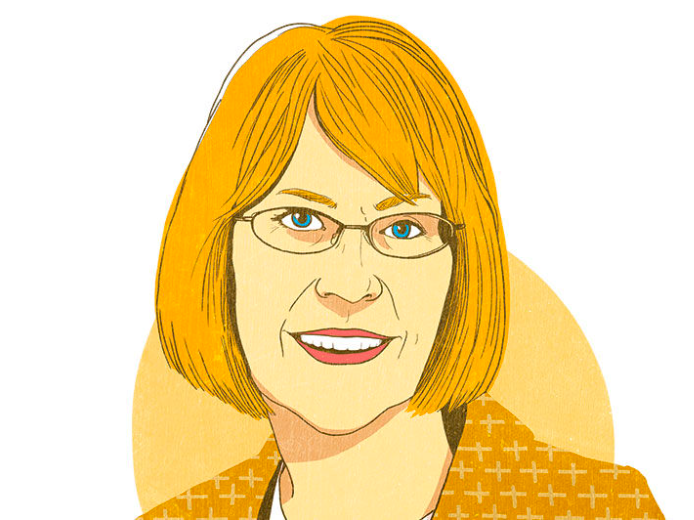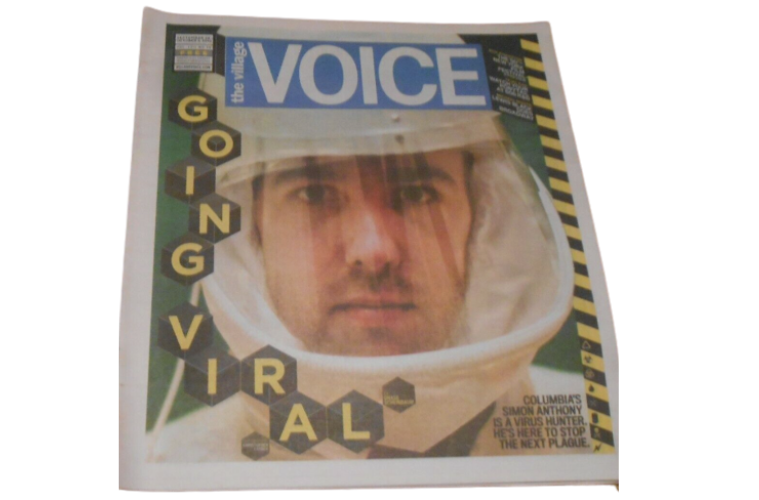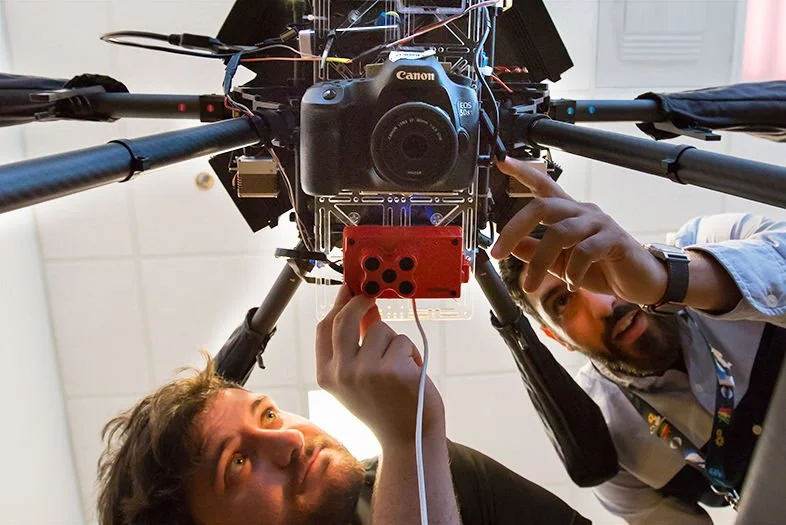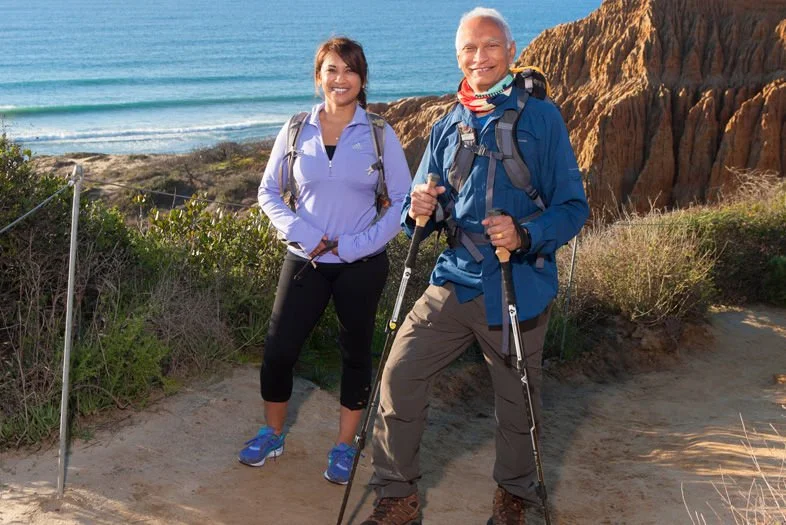Copy Writing
Meticulously accurate, scintillating copy that pleases human readers and search engines alike.
As a paleoclimatology researcher and science envoy for the US State Department, Leinen has been virtually everywhere—on land and sea. She’s visited most of the world’s nations, setting foot on all seven continents, a dizzying array of Pacific islands, and the South Pole. That doesn’t even cover her time crisscrossing the world’s oceans, on the surface and the seafloor, where she’s ventured as deep as 13,000 feet and once discovered undersea hydrothermal vents 250 miles off the Washington coast.
Social media post
Our ears perked up last summer when @sandiegomag put out a call for nominees to Celebrating Women 2022, a recognition of women who were “transforming San Diego and the world!” Among the many incredible women we know doing incredible things, our Chief Medical Officer, Andi Flory, DVM, DACVIM (Oncology) sprang to mind. The magazine’s description of the “changemakers, groundbreakers, and visionaries” they sought to honor spurred us to toss one of Dr. Flory’s many hats—veterinary oncologist, startup founder, mother, pet parent—into the ring.
He is tall and slender, with light brown hair that forms a small wave. In his London accent, he draws out vowels, particularly when he says viiiruses. He is a trained opera singer who practices tap dance and the waltz during otherwise wasted minutes of laboratory life, like waiting for a centrifuge to stop spinning. In and out of the lab, he wears V-neck sweaters, skinny jeans, and stubble, an unassuming uniform for someone who spies on nature’s conspiracies to unleash a plague on New York.
…
Standing by the centrifuge, there is nothing to do but wait. Moments like that are when he waltzed while earning his doctorate. And he might do a few steps in the BL3, too, but it is nearing the end of a long day, during which he has zipped up the stairs between the lab’s floors many times. His stubbly face looks weary through the helmet, slightly crooked on his head. Inside the respirator mask, a tiny lightbulb (indicating that the electric filter is on) gives his face a blue cast. When he speaks, his voice sounds like he’s talking into a bucket. “I spend half my life writing on tubes and waiting by centrifuges,” he says.
…
And as is often the case, he found mysterious genetic sequences—”dark matter”—that don’t fit with any known life-form. About a third of the genetic codes he finds are dark matter, unidentifiable shadows at the edge of scientific knowledge. “It may be rubbish; it may be bacteria,” he says. “It could be anything.”
…
Just the other day, he was opening a bank account at a Chase on Ninth Avenue in midtown. The banker offhandedly asked, “What do you do?” When he told her, she wrote her phone number on a piece of paper, handed it to him, and said: “Give me a call when you find something serious. I want to be the first to know.”
Social media post
Each year, cancer cuts short the lives of many dogs who might have enjoyed many more years with their families, had the disease been detected earlier. Poppy, the mixed-breed rescue shown here, was one of them. Just four when she lost her battle with late-stage pancreatic cancer, Poppy was a small pup who left an outsized legacy for dogs who came after her.
Her devastating fight with cancer inspired her human, Daniel Grosu, MD, MBA, to start PetDx together with a mission-driven team of scientists and veterinarians, with the aim of unleashing the power of genomics to improve pet health. Poppy’s memory lives on in those who loved her, in the story we’re sharing here, and in our laboratory: our most important instrument, a powerful DNA sequencer, bears her photo and goes by the name of “PoppySeq.” #NationalPetMemorialDay 🧬🐕🐾
Inside an unremarkable office park in Rancho Bernardo, Chris Duffey, a middle-aged electrical engineer, powers up a gadget about the size of a coffee maker. With parts made from PVC pipe, copper wire, and aluminum foil, the contraption looks like a movie prop, something Marty McFly might stumble upon in Doc Brown’s lab.
Duffey cranks up the power source—wired to a knob housed in an Altoids tin—and the machine sputters to life with a staccato buzz. Just then, violet arcs of electricity emanate from an aluminum-foil-covered ring topping the device. He presents a normal fluorescent light bulb in his hand, and as he brings it within a foot or so of the gadget, the bulb illuminates. That’s the function of this homemade Tesla coil—it’s a rudimentary wireless power source.
“It’s been a while since I was able to build anything,” says Duffey, whose electric grin says he enjoys this more than his paperwork-heavy day job as an engineering director in Northrop Grumman’s autonomous systems division.
Social media post
It sounds almost too good to be true: Physicians are winning the war on cancer. Remarkably, cancer death rates in humans have dropped 27 percent over the last two decades. More people are surviving the disease thanks to prevention, improved treatments, and earlier detection through screening. Powered by next-generation sequencing, newly developed multi-cancer early detection (MCED) tests can now screen for numerous cancer types with a simple blood draw.
⠀
Major veterinary organizations have deemed early detection critical for management of cancer in companion animals, too. Survival rates are highest with early diagnosis. Unfortunately, canine cancer is usually found in late stages, mainly following the onset of clinical signs.
⠀
But now, like physicians, veterinarians are finally equipped to screen for cancer in dogs. The use of MCED tests in high-risk patients could lead to earlier diagnosis, before clinical signs appear. Powered by next-generation sequencing just like the MCED tests for human patients, OncoK9® – The Liquid Biopsy Test for Dogs™ is demonstrated to detect 30 different types of canine cancer.
⠀
More people than ever are surviving cancer thanks to effective screening programs. Let’s make that possible for dogs, too.
From Bangladesh by way of Britain, phaal is a scorcher even among the spiciest of curries. In San Diego, there is precisely one place to order it: World Curry. Slow cooked with tomato, garlic, and ginger, the chicken curry gets its searing heat from a combination of Thai, serrano, habanero, and ghost peppers. Only a few dozen tough-tongued patrons have finished a 12-ounce portion of it, served on a pyramid of rice, in 30 minutes; those who have are immortalized on a whiteboard. Just a single customer—who to date has endured 100 of the brow-soaking phaal dinners—has earned his very own whiteboard and the undisputed title of “Phaal King.”
Social media post
Bella presented at her routine wellness visit with no clinical signs of cancer, but due to her age and breed, was prescribed OncoK9. When the result came back as Cancer Signal Detected, a Confirmatory Cancer Evaluation was performed, revealing multiple concerning masses and lesions, leading to a diagnosis of hemangiosarcoma.
The result helped the veterinarian shorten the path to diagnosis, allowed Bella’s owners time to prepare and the option to start therapy, and allowed Bella to begin therapy prior to developing clinical signs—potentially giving her prolonged good quality of life.
Everything about being a parent is expensive: Diapers, food, toys, college … bail. In today’s world where the cost of living is yuge, the rent is too damn high, and incomes are stagnant, how you handle your personal finances could be the difference between vacations to see Mickey Mouse or day trips to see Chuck E. Cheese.
Social media post
In one sense, the story of PetDx® begins down the road at @illuminainc, where President and CEO Dr. Daniel Grosu served as the very first chief medical officer. In another sense, it begins with Poppy. After stealing Grosu’s heart, the 8-pound rescue dog battled pancreatic cancer. Though she lost that battle at the young age of four, she inspired Grosu to leverage Illumina’s next-generation sequencing technology to develop noninvasive cancer testing solutions for pets.
“People really care about their pets, and we can help make a big impact in the lives of many families,” says Grosu. “Because when a pet has cancer, it’s not just the pet that’s suffering. It’s really the entire family that’s suffering.”
No one loves San Diego more than birds—except maybe birdwatchers. Feathered friends flock here for our fair climate, varied geography, and fresh- and salt- water habitats. Located along the Pacific Flyway for migratory birds, San Diego County has played host to 515 species, including those that have winged great distances, and others who call it home. Though winter sees the greatest number of birds here, birding can be done any day of the year, and everywhere in the county, from the beaches to mountaintops to the desert.
…
From the air, Mission Bay’s 4,000 acres must appear to birds as a massive avian oasis. Indeed, such feathered species as the endangered light-footed clapper rail and Belding’s Savannah sparrow can be found here alongside willets, whimbrel, spotted sandpipers, and the ubiquitous seagull. Two likely spots for bird spotting are the neighboring Northern Wildlife Preserve and Kendall-Frost Mission Bay Marsh Reserve along the bay’s northern reaches. Find an observation deck at the reserve’s southern end and allow interpretive kiosks to help you piece together the bay’s airborne ecological tapestry.
Mountains, beaches, bays, sky-scraping buildings—you better believe San Diego has some jaw-dropping scenery. Even for such a picturesque place, some spots are downright postcard-pretty. Some of these views are right off the road. Others require some work to attain. Either way, they pack in about as much of the beauty of California’s Beach City as is possible in one dramatic shot.
…
From high atop the bluffs is an unbroken view of the blue sea and sky, a dramatic vista of the La Jolla peninsula, the Scripps Pier, and the coastline stretching north. Watch as an undersea canyon funnels waves onto the shores of Blacks Beach, as paragliders lift off into westerly winds, and as the sun makes a leisurely dip toward the horizon.
Following In Her Father’s Footsteps
Hiking and medicine go hand-in-hand for Scripps' father-daughter doctor duo
For an entire decade, Prabhakar Tripuraneni, MD, a radiation oncologist at Scripps MD Anderson Cancer Center and Scripps Clinic, drove past Torrey Pines on his daily commute without so much as a pit stop. That all changed when the Indian-born doctor and longtime Carmel Valley resident was invited on a hike. He was hooked. That walk among the stately trees and proud bluffs marked the beginning of a beautiful friendship.
For the past 25 years, Dr. Tripuraneni has been walking those same trails every Saturday and Sunday, plus twice more per week during the summer. He estimates he’s hiked there thousands of times.
He’s also taken on some notably tougher treks: Machu Picchu (“a walk in the park”), Mount Kilimanjaro (“a butt kicker”), Mount Whitney (three ascensions), and a 100-mile stretch of Spain’s Camino de Santiago. “I came to the painful conclusion the human body was not designed to hike 33 miles three days in a row,” he says.

























